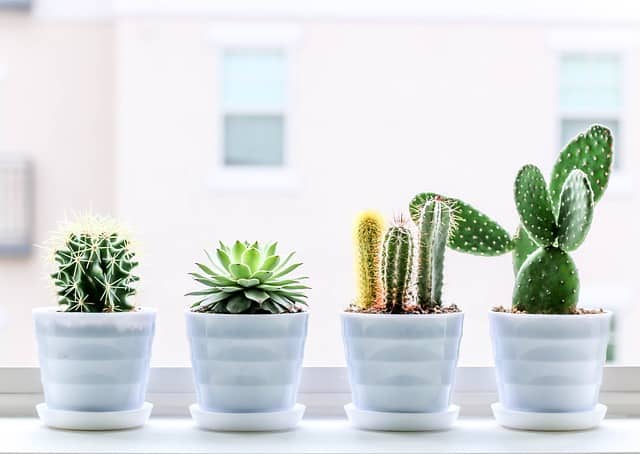Succulents are an excellent addition to any garden, but for many homeowners, the cost of purchasing them is high.
With the abundance of succulent-looking weeds that can be found almost anywhere, you may be able to use these to create your succulent garden without spending a dime!
In this article, we’ll be looking at some of the most common weeds that look like succulents and their features. With this information, you’ll be able to pick the succulent look-alikes that suit your garden. Keep reading below!
Top 5 Weeds That Look Like Succulents
See more similar posts:
- Plants That Look Like Raspberries
- Flowers that Look Like Babys Breath
- Flowers That Look Like Feathers
- Weeds that Look Like Ferns
1. Purslane
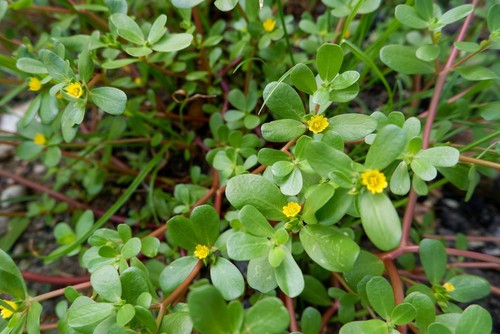
Purslane is a very common weed that looks like a succulent. It is an annual herb that grows in low-lying spots and is found in every state of the United States. This weed prefers warmer climates but will grow almost anywhere there’s dirt to sprout.
It has been praised by every culture throughout history, whether consumed as an herb or used as medicine. This is because Purslane has great nutritional value as well as medicinal benefits.
Common purslanes are extremely versatile when it comes to preparing them—they’re excellent additions to salads and are eaten raw in sandwiches. This plant is easily identifiable because it’s much denser than most weeds.
Moreover, it grows tall, reaching up to 6 inches, with the main root and light-green leaves. Purslane leaves are dense and grow out in groups of 4 with smooth edges. What’s more, the stems can be either red or green.
Interestingly, you will know spurge by looking for oppositely located leaves, a dark spot in the center of each leaf, and white, milky sap.
2. Sedum

Sedum looks like a succulent and is related to them despite some differences. This low-growing perennial spreads quickly, plus its leaves have thick, succulent egg-shaped sections. Due to its high adaptability, the sedum plant is an invasive species that is difficult to control.
Unlike other plants that require fertile soil and moisture, sedum thrives in unfriendly conditions such as rocky soils or dry climates. The sedum’s unique cellular structure still allows it to resist herbicides.
In appearance, they’re small and waxy, with a light green shade. In June and July, Sedum blooms bright yellow flowers that have five petals. The flowers produce pointed seed pods with seeds inside them. Unfortunately, when this plant takes root, it can be difficult to get rid of.
3. Donkey Ear Plant
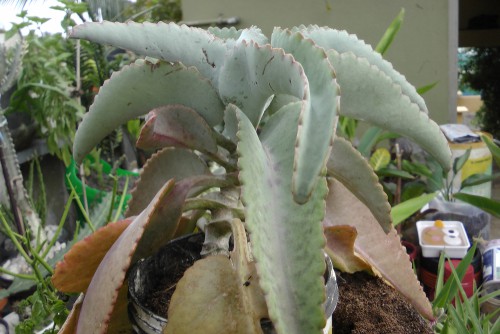
Donkey ears are another succulent-like weed that’s native to Madagascar. They grow their roots and can create new baby plants through their leaves.
Donkey ears are usually between 12 and 18 inches tall, with leaves that are anywhere from one foot to 1.6 feet long. They have green leaves that are covered in epicuticular wax, and it appears grayish-green with maroon spots.
These plants produce reddish-yellow flowers in the fall or early winter. They bloom for two months, and then die back. Donkey ear plant grows best in partial shade, but it can live in full sun. It doesn’t need a lot of water, and you can propagate it by cutting off branches in the early spring.
4. Spurge
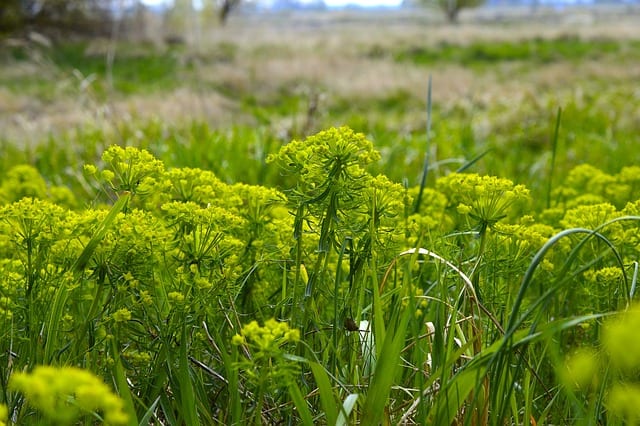
This common weed has low-growing leaves and can get out of control fast. It’s an annual summer weed, and it grows by spreading to lower parts of the ground. There are several different species of spurge, each with its characteristics.
Spurge leaves grow from the stem, and you can find them in pairs on opposite sides. The main root is the taproot, and there are long stems that grow out. In addition, if you break one of the leaves, you will find a milky sap inside, which may irritate people. This is a way of identifying this weed.
This succulent-like weed is particularly enduring; it can grow at temperatures as low as 45 degrees Fahrenheit. It can also start growing around the same time that other plants germinate—February to September.
5. Portulaca
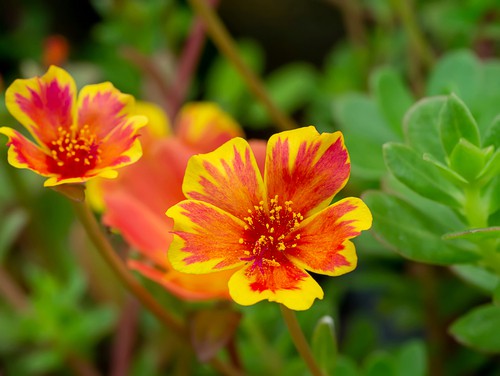
Another type of weed that looks like a succulent is portulaca. It is a small, low-growing groundcover plant with colorful flowers. In addition, it grows best in sandy soil and prefers full sunlight.
What’s more, this plant is very easy to grow and needs little sunlight or water. Interestingly, it always grows, but people have a choice as to whether they want it to be aggressive or delicate.
Portulaca flowers are very beautiful; the colors are pink, red, orange, deep lavender cream, and some white. Surprisingly, these succulent-like weeds also attract butterflies.
They are so hardy! And if you get a seed into the ground or anywhere plants can grow, it can take root and grow quickly.
Conclusion
There you have it – the top 5 weeds that look like succulents. Due to some similarities, it can be difficult to tell the difference between succulents and their look-alikes.
Weeds refer to any plants that grow where you don’t want them to. Interestingly, the plants mentioned in this article fit that description.
Nevertheless, some of them are succulents. And you need to be careful about them when planting in containers. This is because, as weeds, they’ll spread quickly with very little effort.
Frequently Asked Questions
Should I leave Purslane In My Garden?
Purslane is a great addition to your garden. Moreover, it is a tough plant that grows where most plants cannot. This also means that it requires less effort to grow.
In addition, many people get rid of it quickly because of how invasive it can be. But this shouldn’t be a problem, as this plant is helpful. It has remained a nutritional and medicinal herb since ancient times. Hence, it’s fine to have them growing in your garden.
How Do I Get Rid Of Purslane?
To get rid of purslane growing in your garden, you can hand-pull them or use chemicals. In addition, using chemicals on these plants is better than hand-pulling them.
And the reason is that small parts of the stem and roots can remain when you hand-pull purslane. These remains can further promote the growth of this plant. However, a better time to hand-pull these weeds is to
What Makes a Plant Succulent?
Plants considered to be succulents have fleshy but dense leaves. Moreover, these kinds of plants also have swollen stems capable of storing water.
In addition, plants that are succulents can survive in low-water conditions such as mist and dew. And this makes them resistant to drought.

Hey, I’m Lisa and I’ve been an avid gardener for over 30 years. I love writing, talking and living in the garden! Feel free to connect with me on my socials below

